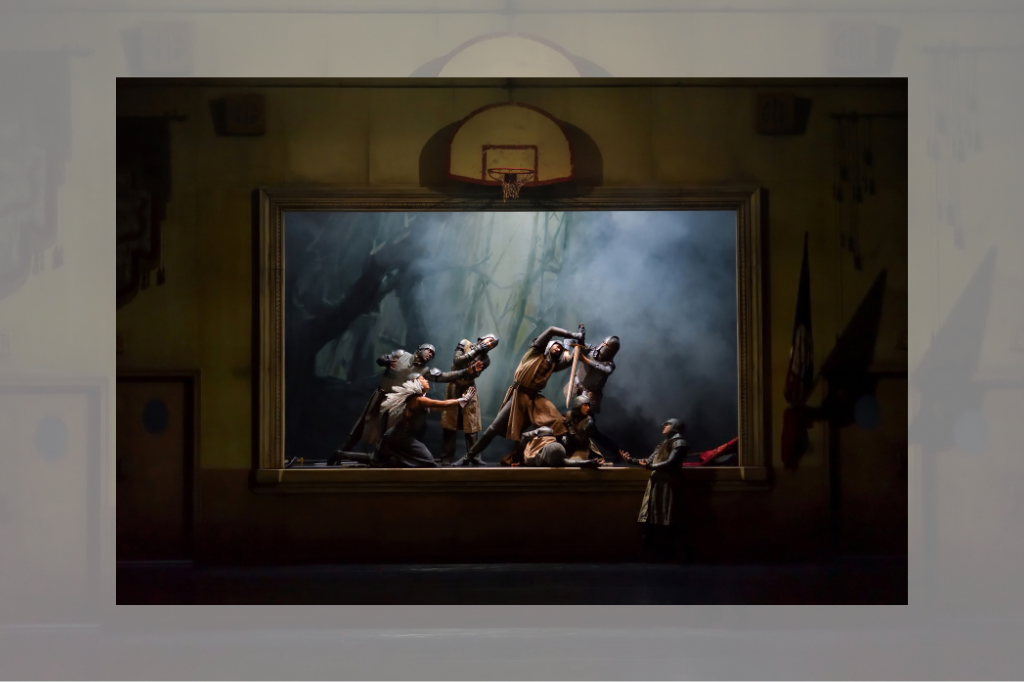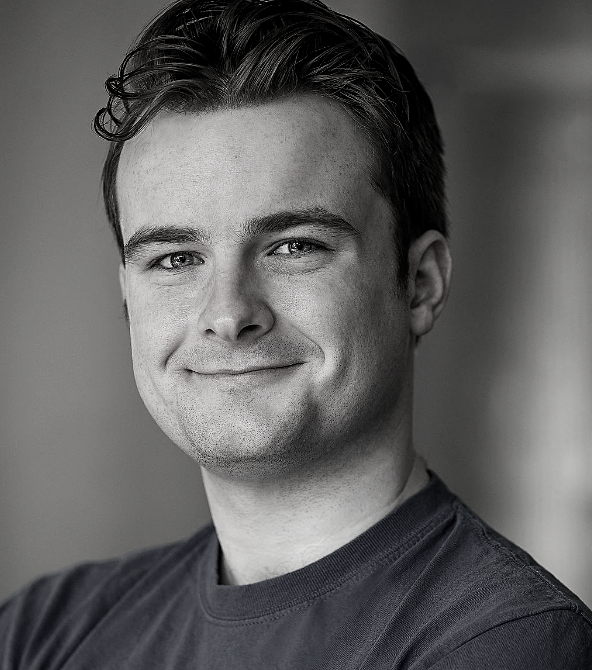REVIEW: Kidd Pivot’s Assembly Hall uses contrast to astonishing effect
Contemporary dance’s embrace of abstraction disarms the theatre critic in me. After weeks of shows driven largely by text (O, Canada!), dance artists’ tendency to grab onto the figurative and hold it close leaves me felled.
The trick of choreographer Crystal Pite and co-creator Jonathon Young’s dance-theatre: though their productions include hefty doses of text, the words don’t make things more literal, but less. Building on the pair’s acclaimed other collaborations (2015’s Betroffenheit and 2019’s Revisor), Kidd Pivot’s often astonishing Assembly Hall finds power in contrast: voice-overs counterpoint movement, time periods collide, and atmospheres dissolve before reappearing as their opposite. It renders an assembly of minds as an assembly of aesthetics, all vying for dominance.
(Assembly Hall is co-produced by Canadian Stage, which is hosting it at the Bluma Appel Theatre for a short, sold-out run. Halfway through the opening night performance, technical difficulties prompted a pause of a few minutes.)
The 80-minute show takes place in a dilapidated community hall, complete with a basketball hoop and a stage guarded by red velvet curtains (scenic design by Jay Gower Taylor). Here, the General Assembly of the Benevolent and Protective Order’s board of directors is carrying out its annual meeting. Spectral lighting by Tom Visser initially implies that this is an evil-minded organization of great import — but we soon find out it’s actually an octet of medieval re-enactors who oversee an event called “Quest Fest.”
Like many events run by older cultural organizations, Quest Fest’s attendance is dwindling. In the face of this precarity, the Order has been considering ceasing operations. As the meeting unfolds with pompous formality courtesy of board chair Shaun (danced by Doug Letheren and voiced by Young), the group goes in circles on this difficult topic.
Pite and Young stage that primary narrative on a semicircle of dinky chairs. Like Revisor, voice-over dialogue runs concurrently with Pite’s choreography, with dancers lip-synching to lines voice actors have pre-recorded. It’s key that neither element takes prominence: text and movement push with more or less equal force, balancing each other out. This imbues the work with a sense of totality; the removal of a single plank would sink the ship.
Assembly Hall splinters as it progresses. The medieval tale the Order re-enacts during every Quest Fest (which includes a king and a knight, though the exact details remain vague) comes to life, entwining itself with the meeting in expressionistic ways. Dave (danced by Gregory Lau and voiced by Ryan Beil), who’s new to the Order, finds himself lost, wandering the tangle of narratives.
The choice to intermesh these stories isn’t particularly provocative on a conceptual level. And the show’s structure, a gradual descent into total fragmentation, is one seen relatively often. But Pite and Young’s execution is characteristically sublime, bringing to mind theatre director Robert Wilson’s oft-repeated claim that “if you put a baroque candelabra on a baroque table, both get lost. You can’t see either. If you place the candelabra on a rock in the ocean, you begin to see what it is.” Beyond the coincidence of Assembly Hall including a literal candelabra, similar frictions abound: when the hall’s curtains part to reveal a woman in a poofy gown (designed by Nancy Bryant) sobbing in a desolate wood, for instance, the image looks eerily out-of-place next to the stained walls.
Assembly Hall’s love of contrast stretches beyond the visual: the show mixes genres, too. Owen Belton, Alessandro Juliani, and Meg Roe’s sound design is often decidedly cinematic, thanks to a smattering of Zimmerian synth booms; Pite adds on slow-mo choreography fit for an action movie; and the show’s dialogue sounds like it’s cut together rather than recorded in one take, paralleling the rhythms of film editing. Elsewhere, a dash of Tchaikovsky gestures toward ballet, an allusion Pite matches with the appropriate pastiche.
Yet there’s also something deeply literary about the work. The show sometimes pivots to the subjective, allowing characters to spill out their interior thoughts in soaring arias of movement and language. Compare with your modernist writer of choice; personally, I was reminded of Virginia Woolf and Thomas Bernhard.
What is Assembly Hall about? Well, the re-enactment element surfaces meta-theatrical questions, and the failure of the Order’s traditional meeting practices to produce useful solutions prompts reflection on the disjunctive role old institutions play in today’s illogical world.
But Pite and Young’s stage images are so rewarding that there isn’t much reason to worry about dull things like themes. Assembly Hall knocks Wilson’s candelabra into the raging sea — and keeps it burning.
Assembly Hall runs at Canadian Stage until December 9. Tickets are available here.
Intermission reviews are independent and unrelated to Intermission’s partnered content. Learn more about Intermission’s partnership model here.














Comments